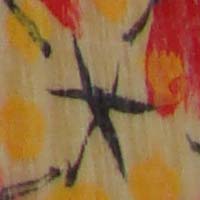Sony Cyber-shot DSC-W300 Review
Review Date: August 20th 2008
Author: Gavin Stoker
Leave a comment about this Review
|
Image Quality
All of the sample images in this Review were taken using the 13.6 megapixel JPEG setting, which gives an average image size of around 3Mb.
Happily, Sony's Clear RAW Noise Reduction appears to deliver effective results, as image noise is remarkably well controlled up to and including ISO 800, and at ISO 1600 better than most. It's only when you get to ISO 3200 that you notice a drop in detail, but even then visible grain is kept to a minimum. Though colours appear realistic when viewed in isolation, measured against the likes of Olympus, Nikon, Canon or Fuji compacts they appear to have been given a boost as regards saturation, even with the W300 left on its standard default settings and no effects or tweaks applied. If you prefer you can of course switch to the 'real' setting � though it's curious to me why any manufacturer would (by default) suggest that its regular settings were therefore 'unreal'. With D-Range Optimiser active a pleasing array of foreground and background detail is maintained, while, unlike on say a Nikon starter DSLR (Nikon has its own exposure evening variant) implementing this doesn't appear to noticeably slow down operation. Given the Carl Zeiss lens bolted onto the front and all those additional millions of pixels I expected the images from the W300 to be sharper than they were. To be honest, I didn't notice a great improvement over an 8MP model � that would also give you poster size prints to A3+ � suggesting Sony is just playing the numbers game like everyone else. Though there is some purple pixel fringing evident, this is only so under extreme magnification, so shouldn't be a deal breaker. Overall then images are roughly what you'd expect to see from a top of the range snapshot model � more than adequate if not quite perfect.
Noise
There are 7 ISO settings available on the Sony Cyber-shot DSC-W300 which you can select at any time if the camera is in the Program or Manual shooting modes. Noise is remarkably well controlled up to and including ISO 800, and at ISO 1600 better than most. It's only when you get to ISO 3200 that you notice a drop in detail, but even then visible grain is kept to a minimum. Here are some 100% crops which show the noise levels for each ISO setting:
ISO 80 (100% Crop) |
ISO 100 (100% Crop) |
 |
 |
ISO 200 (100% Crop) |
ISO 400 (100% Crop) |
 |
 |
ISO 800 (100% Crop) |
ISO 1600 (100% Crop) |
 |
 |
ISO 3200 (100% Crop) |
|
 |
|
Sharpening
Here are two 100% crops which have been Saved as Web - Quality 50 in Photoshop. The right-hand image has had some sharpening applied in Photoshop. The out-of-the camera images are a little soft at the default sharpening setting, with further sharpening in a program like Adobe Photoshop neccessary. You can change the in-camera sharpening level if you don't like the default results.
Original
(100% Crop) |
Sharpened (100% Crop) |
 |
 |
 |
 |
Chromatic Aberrations
Though there is some purple pixel fringing evident, as shown in the examples below, this is only so under extreme magnification, so shouldn't be a deal breaker.
Example
1 (100% Crop) |
Example
2 (100% Crop) |
 |
 |
Macro
The Sony Cyber-shot DSC-W300 offers a Macro setting that allows you to focus on a subject that is 5cms away from the camera. The first image shows how close you can get to the subject in Macro mode (in this case a compact flash card). The second image is a 100% crop.
Macro Shot |
Macro Shot (100% Crop) |
 |
 |
Flash
The flash settings on the Sony Cyber-shot DSC-W300 are Auto, Flash On, Flash Off and Slow Synch, with Red-eye Reduction available as a main menu option. These shots of a white coloured wall were taken at a distance of 1.5m.
Flash Off - Wide-angle (35mm) |
Auto Flash - Wide-angle (35mm) |
 |
 |
Flash Off - Telephoto (105mm) |
Auto Flash - Telephoto (105mm) |
 |
 |
And here are some portrait shots. Neither the Auto setting or the Red-eye reduction mode caused any obvious red-eye.
Auto |
Auto (100% Crop) |
 |
 |
Auto & Red-eye reduction |
Auto & Red-eye reduction (100% Crop) |
 |
 |
Night Shot
The Sony Cyber-shot DSC-W300's maximum shutter speed is 30 seconds in the Manual shooting mode, which is excellent news if you're seriously interested in night photography. The shot below was taken using a shutter speed of 1/80th second, aperture of f/4 at ISO 160. I've included a 100% crop of the image to show what the quality is like.
Night Shot |
Night Shot (100% Crop) |
 |
 |
|
![]() PhotographyBLOG
is a member of the DIWA
organisation. Our test results for the Sony Cyber-shot DSC-W300 have been submitted to DIWA
for comparison with test results for different samples of
the same camera model supplied by other DIWA
member sites.
PhotographyBLOG
is a member of the DIWA
organisation. Our test results for the Sony Cyber-shot DSC-W300 have been submitted to DIWA
for comparison with test results for different samples of
the same camera model supplied by other DIWA
member sites.
